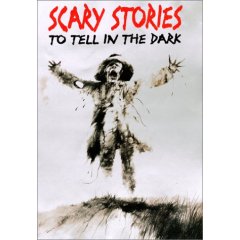Cendrillon

1. BIBLIOGRAPHIC DATA
Cenrillon--A Caribbean Cinderella
Written by Robert D. San Souci
Illustrated by Brian Pinkney
Published by Aladdin Paperbacks
ISBN 0-689-84888-9
2. PLOT SUMMARY
A Caribbean version of a classic fairy tale, this version of Cinderlla is told from the Fairy Godmother's point of view. The traditional aspects of Cinderella are included in this version--the wicked Stepmother, evil Stepsisters, a handsome elligible bachelor and a missing slipper. However, the use of French Creole words and phrases throughout the story, and Brian Pinkney's colorful woodcut illustrations make this version of a classic seem like a brand new story.
3. CRITICAL ANALYSIS:
This Caribbean version served two purposes for me. First, I was entertained with a fresh take on the classic Cinderella story, and second, I learned much about the traditions and language of the French Creole. I really enjoyed the story being told from the Fairy Godmother's point of view. Right away, I was interested, because I was seeing a familar story told through new "eyes." The use of the French Creole phrases throughout the book gave the story a nice voice that helped pull me into the setting. I liked the humor the Fairy Godmother brought to the retelling. For example, when one of the step sisters is trying to get the slipper on, it is the Fairy Godmother who suggests that maybe the step sister should, "...cut off those big toes...it would be a fine fit."
Brian Pinkney's woodcut illustrations help give this book an "island" feeling. His use of color makes the characters appear to be "moving" throughout the story. This book would be a fine example to use to show students the woodcut illustration.
4. REVIEW EXCERPTS:
*From Publisher's Weekly--"The lyrical cadences of the text spattered with French and Creole words combine with the sensuous paintings to bring the tropics to life."
*From Booklist--"A vital rendition of an old favorite."
5. CONNECTIONS:
*Students could create a Creole/English picture dictionary.
*Students could create a graphic organizer that compares this version of Cinderella with a more traditional version of the Fairy Tale."
*The colorful woodcut illustrations are a great example of the use of color and movement in drawing, students could use the illustrations to help them create a woodcut picture.





